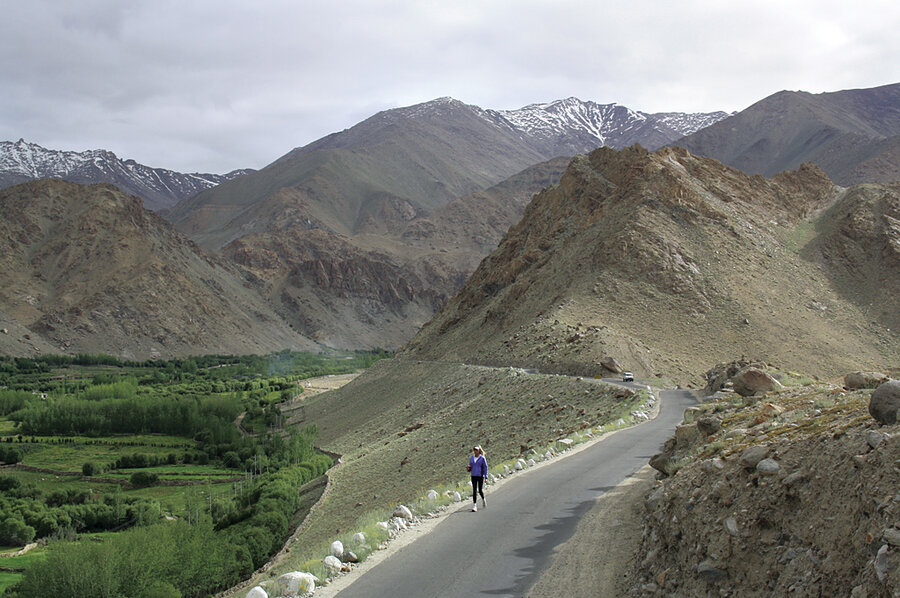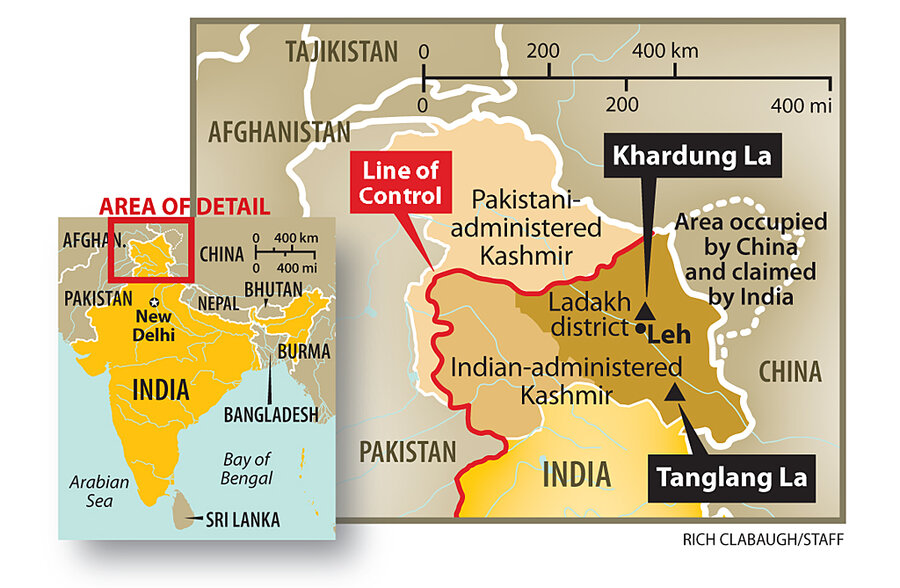Extreme sports in high India: an ultramarathon tests human endurance
Loading...
| Leh, India
Picture running a marathon, but at such Himalayan heights that it's like running with one lung. Then imagine continuing for the length of another four marathons. That's what Englishman Mark Cockbain accomplished in late July when he became the first and only finisher of an ultramarathon called "La Ultra – The High" in Leh, India. His time: 48 hours, 50 minutes to cover 138 miles.
On the way, he narrowly avoided being swept off a 17,700-foot mountain pass by a small avalanche. Then he passed into a valley of searing heat, and up over a frigid second mountaintop.
"When I got to the top of the second summit, I was really suffering. I could see double. I couldn't breathe properly," says Mr. Cockbain. "Apparently I was veering to the right" – cliffside – "which wasn't good, because it was a long way down."
Whether it's being first to kayak around the Arctic Circle or complete an ever more extreme ultramarathon, explorers today are no longer rolling back the edges of maps but are very much pushing at the boundaries of human possibility.
"We shouldn't be calling this risk-taking. We should be calling this normal, and society we should call 'safety seeking,' " says Eric Brymer, a researcher of extreme sports at the Queensland University of Technology in Australia. "I think a lot of what is going on in society that is negative is because we are not really living what we are capable of living."
Ultramarathons – defined as any race longer than 26.2 miles – are growing in popularity. Last year, runners completed 36,106 ultramarathons in North America, up from 30,789 in 2008, according to UltraRunning magazine.
"Part of it is the democratization of the marathon. When the marathon is ho-hum, people start to jump up to 50 kilometers or 50 miles and they enjoy the challenge," says Bryon Powell who runs iRunFar.com.
How high is high?
The High is tough even by ultra standards. The race takes place entirely above 11,000 feet. It climbs up and down two of the world's highest passes – Khardung La and Tanglang La – on the Leh-Manali highway. Organizers call it the highest ultra ever. (An "Everest Ultra" starts at roughly the same elevation but runs mostly downhill, for "just" 40 miles.)
Only three runners could be persuaded to show: Cockbain and Americans Bill Andrews and Molly Sheridan. Even with a couple weeks of acclimatization, the altitude still socked them.
"You feel like you are on the moon. You are in slow motion," Ms. Sheridan said as she jogged down Khardung La some 40 miles into the race on the second day.
Sheridan has completed 35 ultra-marathons. She started with marathons, but "speed is not my gift and I wondered how far I could go." She surprised herself by finishing a 31-mile race – so she went farther, then farther.
"When you push yourself to those limits – and I always go carefully – I just think there's so much that you get from it," she says. "So much of it is mental strength. I think the average person can run that distance if you train properly."
She glances at the scene below her. Small farms of green are scattered like emeralds in the bowls of beige, barren mountains. The view and her iPod – loaded up by her daughters – keep her going.
As she smiled and jogged, she mentioned little of the previous day's extremes that sent both her and Mr. Andrews off the course for the night.
Determined to finish
Race coordinator and sports medicine doctor Rajat Chauhan met Sheridan and Andrews as they returned to the course on Day 2 to jog through Leh. They both were determined to finish before the 72-hour race cutoff. Dr. Chauhan judged them well enough to continue. But after they passed, he confided: " I think we are only going to have one finisher."
A few miles later Andrews dropped out for an unrelated illness. Meanwhile, Sheridan approached the 100-mile mark, burned by the heat. Chauhan told her about Andrews, and too worried about her friend, she quit. They both plan to come back and complete the race another year.
Back on Khardung La, Cockbain stomped over an avalanche blocking the road. After 41 hours of straight running, he plodded to the freezing top of Tanglang La, then ran another half marathon down to the finish line. "Your feet hurt but you're telling your mind not to focus on that," he said, "and it becomes a battle between the mind and the body – and the mind always wins."






